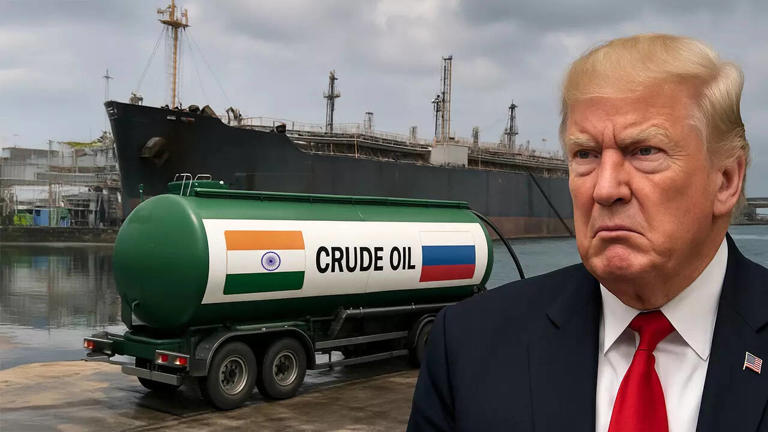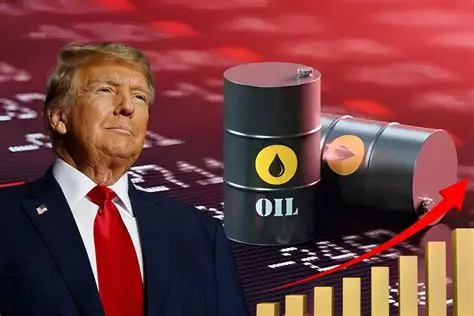
No impact of Trump pressure? Russia remains India’s main crude oil supplier; most economical option for Indian refiners
Despite mounting pressure from the Donald Trump-led U.S. administration to scale down crude oil imports from Russia, Moscow continues to be India’s top energy supplier. Although Indian refiners slightly reduced their Russian oil purchases in September, the country’s share in India’s total crude imports still crossed one-third. This trend highlights New Delhi’s continued preference for cost-effective Russian barrels, even as Washington urges nations to cut ties over concerns that oil revenues are funding Moscow’s ongoing military operations in Ukraine.
Russia continues to be India’s No.1 crude oil supplier
India’s crude oil imports climbed to around 4.7 million barrels per day (bpd) in September, marking an uptick of nearly 220,000 bpd compared to August, while remaining largely unchanged from a year earlier.
Russia retained its position as India’s largest crude supplier, shipping close to 1.6 million bpd — roughly 34 per cent of total imports. Although this figure was around 160,000 bpd lower than the average for the first eight months of 2025, data from global trade analytics firm Kpler, cited in a PTI report, shows that Russian oil continues to dominate India’s import mix.
“Even with a slight decline, Russian crude remains one of the most cost-efficient options for Indian refiners, supported by strong gross product worth (GPW) margins and competitive discounts,” noted Sumit Ritolia, Lead Research Analyst (Refining & Modelling) at Kpler.
Following Russia, Iraq supplied approximately 881,115 bpd, while Saudi Arabia contributed 603,471 bpd and the UAE 594,152 bpd. The United States stood fifth, exporting around 206,667 bpd to India.
Following the onset of the Ukraine war in 2022, Russia swiftly overtook Iraq and Saudi Arabia to emerge as India’s largest supplier of crude oil. As Western nations distanced themselves from Russian energy, Moscow rolled out deep discounts, prompting Indian refiners to ramp up imports of the cheaper crude to meet soaring domestic demand. Russia’s share in India’s oil imports surged dramatically — from less than 1 per cent before the conflict to over 40 per cent at its peak.
More than three years into the conflict, neither the United States nor any global body has enforced sanctions on Russian crude that’s refined into fuels like petrol and diesel. However, in July, U.S. President Donald Trump threatened to impose tariffs on Indian exports in an attempt to pressure New Delhi into curbing its purchases of Russian oil.
Also read :=Russia Helping Pakistan? Moscow Denies Plans to Supply Fighter Jet Engines”
In the following month, Trump imposed an additional 25 per cent tariff on Indian goods imported into the U.S., effectively doubling the existing duty. Interestingly, he refrained from implementing similar measures against China, another major buyer of Russian crude.
Despite mounting external pressures, Russian oil continues to play a vital role in India’s consumption pattern, particularly as fuel demand spikes during the festive season.
“Russian crude is expected to remain central to India’s import portfolio, though refiners are clearly leaning toward greater diversification across suppliers in the Middle East, Americas, and Africa,” said Sumit Ritolia, Lead Research Analyst (Refining & Modelling) at Kpler.
Ritolia predicted that India’s intake of Russian spot cargoes would likely hold steady or see slight gains through the October–December quarter compared with the previous one. “That said, ongoing strains in Russia’s downstream operations mean crude exports should stay robust, with discounts potentially widening to sustain volumes,” he added.
For the final quarter of 2025, Russian shipments to India are expected to hover between 1.6 and 1.8 million barrels per day (bpd), with any notable increase dependent on Moscow offering deeper price cuts.
A key factor that could further support Indian imports is the anticipated resumption of northern Iraqi crude exports via Turkey’s Ceyhan port. If Turkey scales back its Russian oil intake—estimated at 350,000 bpd in Q3 2025—due to tougher EU sanctions from January 2026, those barrels could be redirected to Asian buyers, chiefly India and China.
“The Russia-India crude partnership now reflects equilibrium more than expansion,” Ritolia observed. “New Delhi won’t easily turn away from Russian barrels in the short to medium term. Even with narrower discounts than the $10–20 per barrel gap seen earlier, refiners will keep buying unless officially instructed otherwise—just as was the case with Iranian crude.”
He further noted that Russian oil continues to hold strategic weight in India’s import matrix despite diversification efforts. “Supply chains are established, term contracts are locked in weeks in advance, and overhauling that system isn’t immediate. What we’re seeing is gradual diversification—aimed not at replacing Russia, but at strengthening energy security, reliability, and flexibility,” Ritolia concluded.
